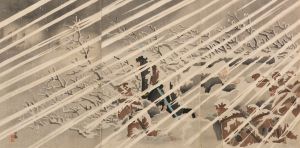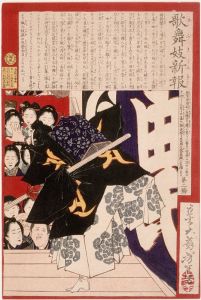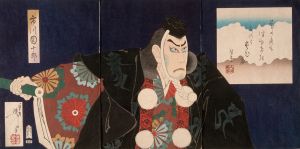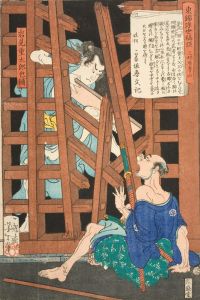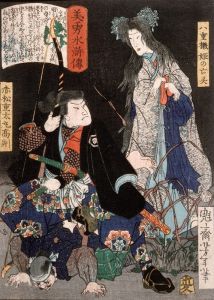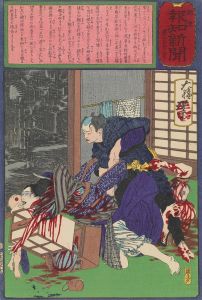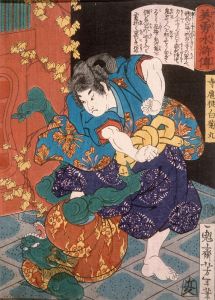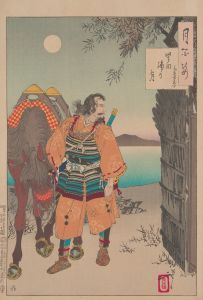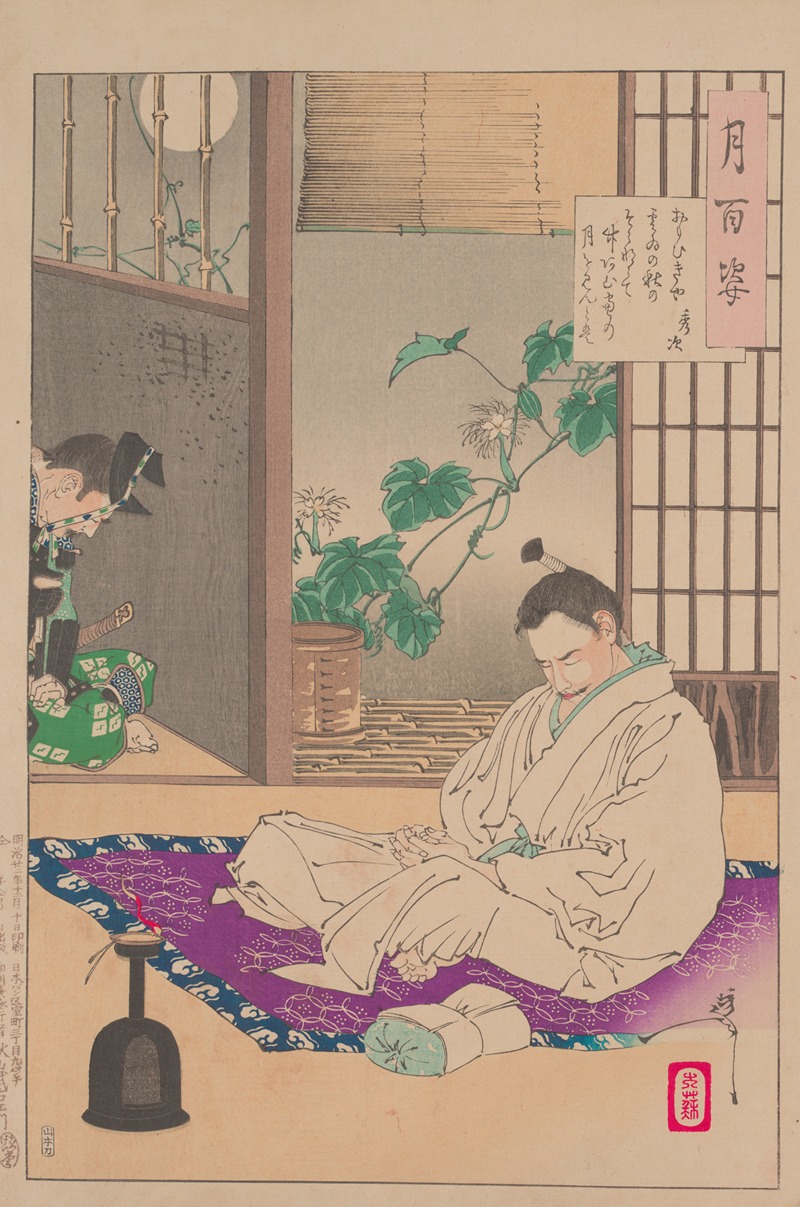
Hidetsugu in exile
A hand-painted replica of Tsukioka Yoshitoshi’s masterpiece Hidetsugu in exile, meticulously crafted by professional artists to capture the true essence of the original. Each piece is created with museum-quality canvas and rare mineral pigments, carefully painted by experienced artists with delicate brushstrokes and rich, layered colors to perfectly recreate the texture of the original artwork. Unlike machine-printed reproductions, this hand-painted version brings the painting to life, infused with the artist’s emotions and skill in every stroke. Whether for personal collection or home decoration, it instantly elevates the artistic atmosphere of any space.
Tsukioka Yoshitoshi (1839–1892) was a renowned Japanese artist known for his woodblock prints and paintings, particularly in the ukiyo-e style. One of his notable works is "Hidetsugu in Exile," which depicts a historical event from the late Sengoku period of Japan. This artwork is part of Yoshitoshi's series that often explored historical and legendary themes, capturing the drama and emotion of the subjects he portrayed.
The subject of "Hidetsugu in Exile" is Toyotomi Hidetsugu, a prominent figure in Japanese history. Hidetsugu was the nephew and adopted heir of Toyotomi Hideyoshi, one of Japan's great unifiers during the late 16th century. Initially, Hidetsugu held significant power and was appointed as Hideyoshi's successor. However, his fortunes changed dramatically due to political intrigue and familial tensions.
In 1595, Hidetsugu was accused of plotting against Hideyoshi and was subsequently exiled to Mount Koya, a sacred Buddhist site. The circumstances surrounding his exile were complex, involving power struggles and the consolidation of Hideyoshi's rule. Eventually, Hidetsugu was forced to commit seppuku, a form of ritual suicide, which was a common practice among samurai to preserve honor.
Yoshitoshi's depiction of Hidetsugu captures the somber and poignant nature of his exile. The artwork reflects Yoshitoshi's mastery in conveying emotion and narrative through visual art. His use of color, composition, and attention to detail brings the historical moment to life, allowing viewers to engage with the story of Hidetsugu's downfall.
Yoshitoshi was known for his ability to blend traditional Japanese art techniques with innovative approaches, and "Hidetsugu in Exile" is a testament to his skill. The piece is part of a larger body of work that often explored themes of heroism, tragedy, and the supernatural. Yoshitoshi's prints were influential in the Meiji period, a time of significant cultural and social change in Japan, and they continue to be celebrated for their artistic and historical significance.
"Hidetsugu in Exile" not only serves as a representation of a specific historical event but also reflects the broader themes of loyalty, betrayal, and the transient nature of power. Yoshitoshi's work remains an important part of the ukiyo-e tradition, and his prints are highly regarded by collectors and art historians alike.
Through "Hidetsugu in Exile," Yoshitoshi offers a window into the past, providing insight into the complexities of Japanese history and the enduring human themes that resonate across time. His ability to capture the essence of his subjects with empathy and precision ensures that his work remains relevant and appreciated by audiences today.







